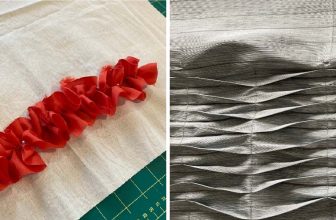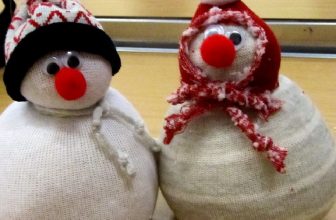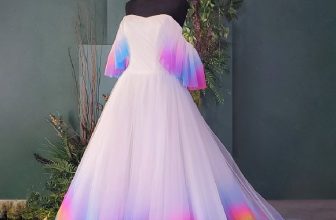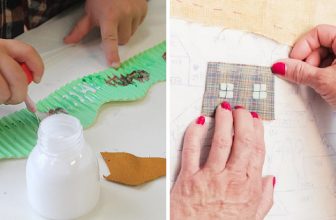How to Remove Stitch Witchery From Fabric
Stitch witchery is a type of adhesive fabric that can be used for hemming, appliqué, and even quilting. The problem with this type of fabric is that it tends to be difficult to remove once it has been applied. Fortunately, you can use a few methods to remove stitch witchery from fabric without damaging the material.
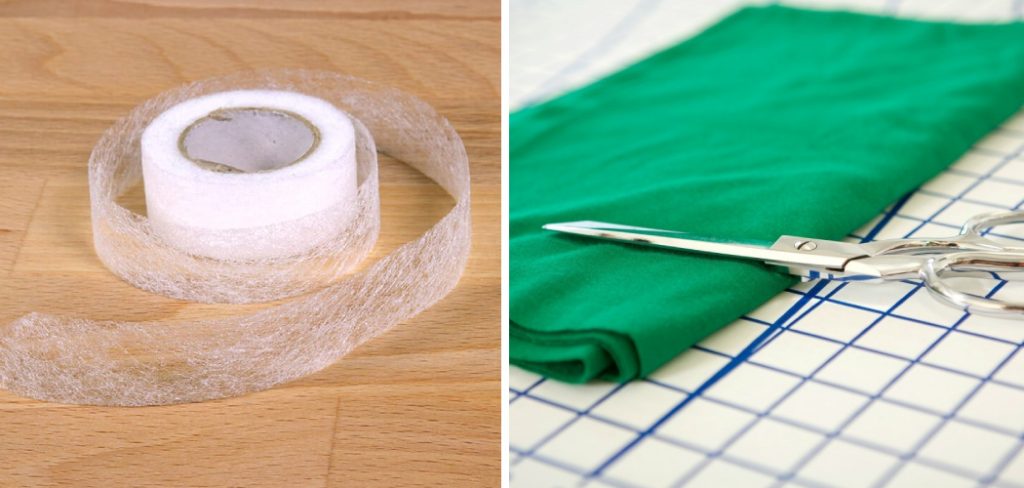
Using stitch witchery to apply fabric without sewing can be a major advantage for crafters. It is much quicker and more convenient than traditional sewing, requiring no needles or thread. Additionally, it allows you to attach two pieces of fabric without using an iron-on patch, which is time-consuming and often leaves lumpy seams. In this blog post, You will learn how to remove stitch witchery from fabric.
Step-by-Step Processes for How to Remove Stitch Witchery From Fabric
Step 1: Inspect the Fabric
Before attempting to remove stitch witchery from fabric, inspect it first. Check for any signs of damage due to the application of the adhesive and see if you can determine where exactly the Stitch Witchery is located.
Step 2: Gently Pull Off Edges
Once pinpointing where the Stitch Witchery is on your fabric, gently pull off any edges you can. As you do this, pull away from the fabric slowly so it doesn’t tear or stretch. Using a clothes iron, gently apply heat to the adhesive area on your fabric. This will help loosen and soften any remaining adhesive that may still be attached to make removing it easier.
Step 3: Remove the Remaining Adhesive With Soap and Water
Once the heat has softened up the adhesive, use a mixture of soap and water to scrub away any remaining residue gently. Ensure you don’t scrub too hard, as this could damage the fabric. If the previous steps didn’t work, adding rubbing alcohol to the area may help dissolve any remaining adhesive. Be sure to test it on a small portion of the fabric before applying it to the whole area, as it could cause discoloration or damage.
Step 4: Use Sticky Tape
Another way to remove any remaining adhesive is by using sticky tape. Stick a piece of tape onto the affected area, then pull it back off. This should help remove any remaining residue from the fabric. If you still have trouble removing the adhesive, try using a product like Goo Gone Adhesive Remover. Make sure to follow all instructions on the packaging before applying this to your fabric, as it may cause damage.
Step 5: Wash the Fabric
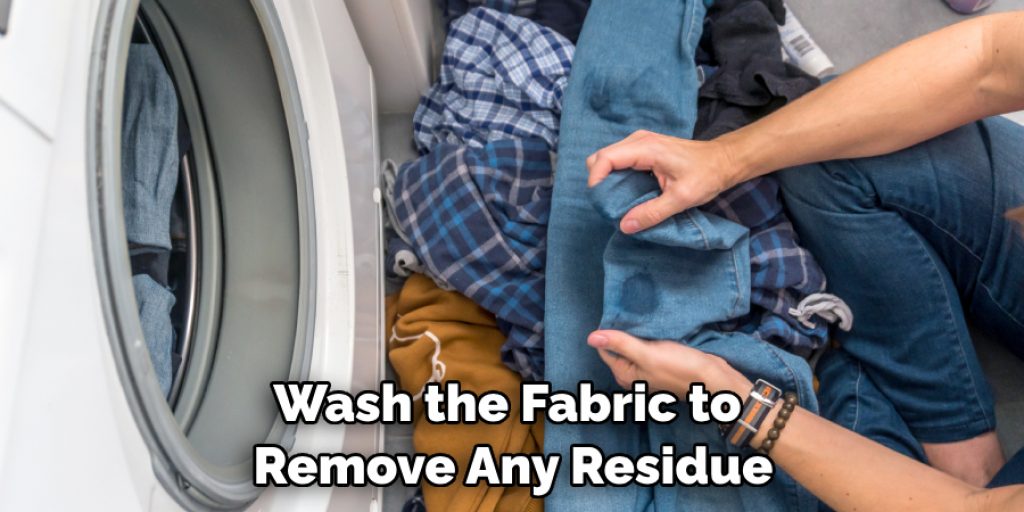
After all of the adhesives have been removed, it is important to wash the fabric to remove any residue that may have been left behind. Ensure you use a gentle detergent and follow the washing instructions on your fabric label. Once the fabric has been washed, make sure to dry it properly. If you are using a machine, set the temperature low and do not use excessive heat, which could damage the fabric.
Step 6: Iron Clean Area
Finally, use a clothes iron to gently iron over the area where the Stitch Witchery was removed from. This will help ensure no remaining residue and the fabric looks as good as new.
By following these steps, you should be able to successfully remove Stitch Witchery from your fabric without causing any damage. Ensure to take care when removing any adhesive from fabrics, as it can easily cause damage if not done properly.
Precautions for How to Remove Stitch Witchery From Fabric
- Wear safety glasses and gloves when handling the hot iron or steam machine. Doing so will help protect your eyes and hands from potential burns.
- Ensure that the area you are working on is well-ventilated, as fumes may be produced when removing Stitch Witchery from fabric.
- Lay a cloth over the Stitch Witchery before attempting to remove it. This will add a layer of protection and help prevent scorching the fabric.
- Set the temperature of your steam machine or iron according to the instructions on the package of Stitch Witchery you purchased. If uncertain, set it to a low heat level and slowly increase as needed.
- Test a small area of fabric before beginning the removal process. Ensure your machine is not too hot, and the fabric will not be damaged.
- Move the steam machine or iron slowly in a circular motion over the area of Stitch Witchery until you can no longer feel any stickiness.
- If using an iron, use it on its lowest setting and turn off the steam. If you wish to use steam, turn off the iron and just use the steam setting. Both are effective at removing Stitch Witchery; however, excessive heat can damage delicate fabrics, so taking your time and caution is important.

Follow these precautions when removing Stitch Witchery from fabric to protect yourself and the material.
What is the Best Way to Store Stitch Witchery After Use?
Once you have used stitch witchery to attach fabric, it is important to store the product properly. Here are some tips for how to store stitch witchery after use:
- Make sure that the adhesive side of the tape is not exposed. Store it on its backing paper or plastic to prevent it from becoming covered with dust and dirt.
- Store the stitch witchery in a cool, dry place away from direct sunlight and heat sources. Extreme temperatures can cause the adhesive to break down quickly or become brittle over time.
- Place each piece of stitch witchery into its plastic bag or container. This will help keep it clean and protected for future use.
- Mark each container or bag with the date of purchase and type of stitch witchery so it can be easily identified later.
Following these steps will help ensure that your stitch witchery remains in good condition for future projects. With a few simple precautions, you can ensure it is ready to use whenever needed.
What Are Some of the Most Common Problems Associated With Using Stitch Witchery?
The most common problem with stitch witchery is that the adhesive can be difficult to remove from fabrics. This often happens when too much adhesive has been used or when the directions for removal have not been followed correctly.
Additionally, the adhesive can be harder to remove if the fabric isn’t properly prepared before adding stitch witchery (such as by cleaning it thoroughly and pre-shrinking it if needed). Other common problems include puckering, wrinkles, and uneven tension when stitching with stitch witchery.
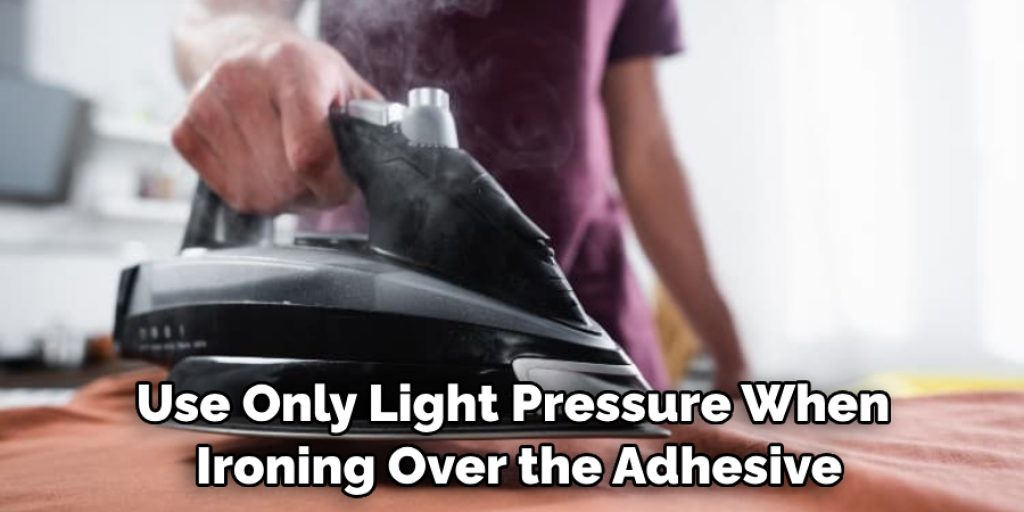
To avoid such issues, it is important to follow the instructions included in the product carefully. When attaching stitch witchery, use only light pressure when ironing over the adhesive and ensure that heat is evenly distributed across the fabric. Ensure adequate time for the adhesive to cool and set before using it.
Lastly, if you need clarification on how much adhesive is necessary for a particular project, use less rather than more. Over-application of adhesive can make removing stitch witchery from fabric difficult or impossible.
How Can You Prevent Damage to Your Fabric While Removing the Stitch Witchery?
Using the right techniques is important when removing stitch witchery from fabric. The best way to prevent any damage to your fabric is by using low heat or iron set on its lowest setting. Be sure to apply pressure in a circular motion, as pressing straight down could cause the adhesive bond to become too tight and result in the tearing of the fabric.
Additionally, if you are using a steam iron, it is important to turn the steam setting off. This will help you avoid over-saturating the fabric and causing any further damage.
When removing stitch witchery from thicker fabrics like denim or canvas, using a higher heat setting on your iron might be necessary. However, it is still important to apply pressure in a circular motion instead of straight down to prevent any damage. Additionally, use a pressing cloth on the fabric while ironing to help you control the heat and pressure applied.
How Can You Avoid Getting Stitch Witchery on My Hands While Working With It?
When using stitch witchery, it’s important to make sure that you keep your hands clean to avoid getting the fusible adhesive on your fingers and hands, wear a pair of rubber gloves, or use a non-stick pressing sheet.
Additionally, if you are cutting out appliques or other fabric pieces with stitch witchery attached, it is best to use a rotary cutter instead of scissors. This will help to reduce the number of fibers that may come off when cutting and sticking the stitch witchery onto the fabric.
Additionally, be sure to use a low-temperature presser or an ironing board cover between your iron and the fabric, as this will protect the fabric from melting due to high temperatures. Finally, always read and follow the instructions and safety precautions on the product packaging. By doing this, you can ensure that your fabric pieces are properly fused without any unwanted residue.
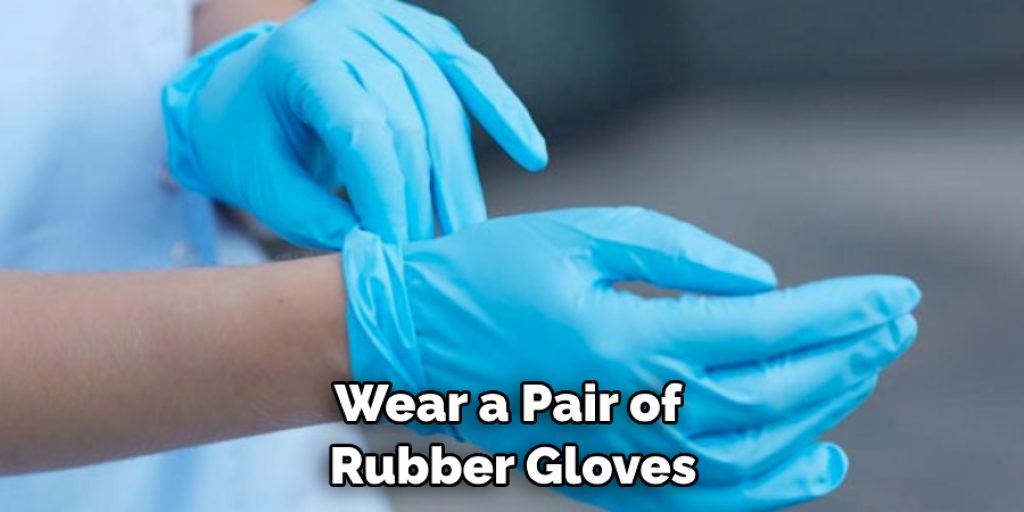
Conclusion
In conclusion, removing stitch witchery from fabric is a simple task. The most important step is to identify the type of bond used on the fabric and select the appropriate technique or product to remove it.
For heat-activated bonds, you can use an iron with steam, an electronic steamer, or a clothing steamer, or simply apply direct heat with an iron and press cloth. You can use sharp scissors or a seam ripper to snip the bond for no-heat bonds. Liquid enzymes, such as those found in laundry detergents, are also effective for removing no-heat bonds.
Finally, be sure not to use abrasive products on delicate fabric that could damage its fibers and cause it to tear or fray. I hope this article has been beneficial for learning how to remove stitch witchery from fabric. Make Sure the preventive measures are followed chronologically.

